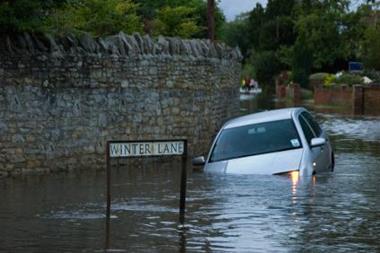A windstorm on the scale of 1987 would result in more than £4bn of losses
Twenty years since the great windstorm that hit southern England, Risk Management Solutions (RMS) has looked at the impact of a repeat of the event today.
Interesting analysis reveals that a windstorm of similar magnitude striking the region in 2007 would result in insured losses ranging between £4bn and £7bn across Europe. Of this, some 70% would be generated in the U.K - over 2.5 times the £1.4bn cost incurred in 1987.
Dr Barbara Page, senior model manager for European windstorm modeling at RMS says: “Not only has inflation pushed up property prices since 1987, but there has been around a 20% increase in the number of households in the areas of Britain affected by the storm.
"In 1987, approximately 7.5 million households were located in the storm’s destructive path across London, the southeast and east of England, and now this would be over 9 million. Commercial property and infrastructure investment in the region has also rocketed, and the cost of construction has more than doubled, so there would be a dramatic hike in rebuilding costs from twenty years ago.”
It is well known that the storm was poorly forecast, partly because of the dearth of observations offshore where the storm developed, and partly due to the nature of the storm itself.
“While contemporary forecasting models are becoming increasingly sophisticated, events like the October 1987 windstorm, which was an extra-tropical cyclone with hurricane force winds, remain very difficult to predict,” says Dr Page.
While the great windstorm of 1987 was widely acknowledged as Britain’s most severe since 1703, losses would have been far higher if it had struck just tens of kilometers to the northwest of its actual path, taking a direct hit on London and the densely populated M4 corridor to the west.
In the worst case analysis, losses could reach as much as £9 billion in the U.K. alone.
Although the worst affected areas of the October 1987 Windstorm are only likely to experience such high winds once every 200 years, the probability of insurers incurring the same level of losses from a storm is once every 35 years.
RMS analysis shows that less severe but more widespread storms, such as Windstorm Daria in January 1990, can actually cause greater insured damage than powerful but more concentrated events like the 1987 Windstorm.
Although David Crichton, visiting professor at Benfield Hazard Resercah, gave a warning at the Insurance Times Insuring Climate Change conference last week. He said:" On the twentieth anniversary of the 1987 storm nothing has been done to improve building standards since then."
And he added that local councils do not talk to insurers enough to deal with big issues. "Local planners in England are not talking to the key stakeholders."
Copies of the RMS special report ‘The Great 1987 Windstorm: 20-Year Retrospective’ can be downloaded free of charge at www.rms.com
Hosted by comedian and actor Tom Allen, 34 Gold, 23 Silver and 22 Bronze awards were handed out across an amazing 34 categories recognising brilliance and innovation right across the breadth of UK general insurance.









































No comments yet